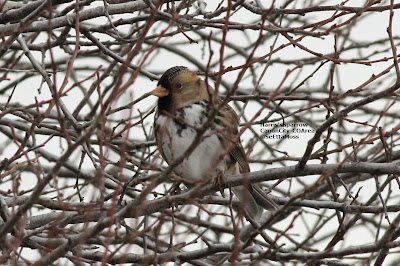Closer views of that Prairie Falcon--including a view of it's 'choanal slit'

Here are two more pics (and an enlargement of one) of that Prairie Falcon--I took these through my sun roof with my Canon dslr using my 400mm lens and a 1.6 extender (that means it multiplied the image a lot) which takes such good quality pics that I can crop them tighter. The pics above and enlarged below give a good view of the wide yellow eye ring that is found on adult birds that isn't seen often in the field. In the bottom pic the falcon has it's beak wide open. I wish I could say for sure if it was just yawning but unfortunately when looking through the viewfinder of dslr cameras such details are not apparent. It does provide a unique view of the inside of it's beak that shows it's 'Choanal slit'--"The slit in the roof of the mouth which connects to the bird's sinuses. " (from the ModernApprentice.com Be honest, I bet most of you are like me and did not know they had such a structure. For a closer view of it just click on the pi...




